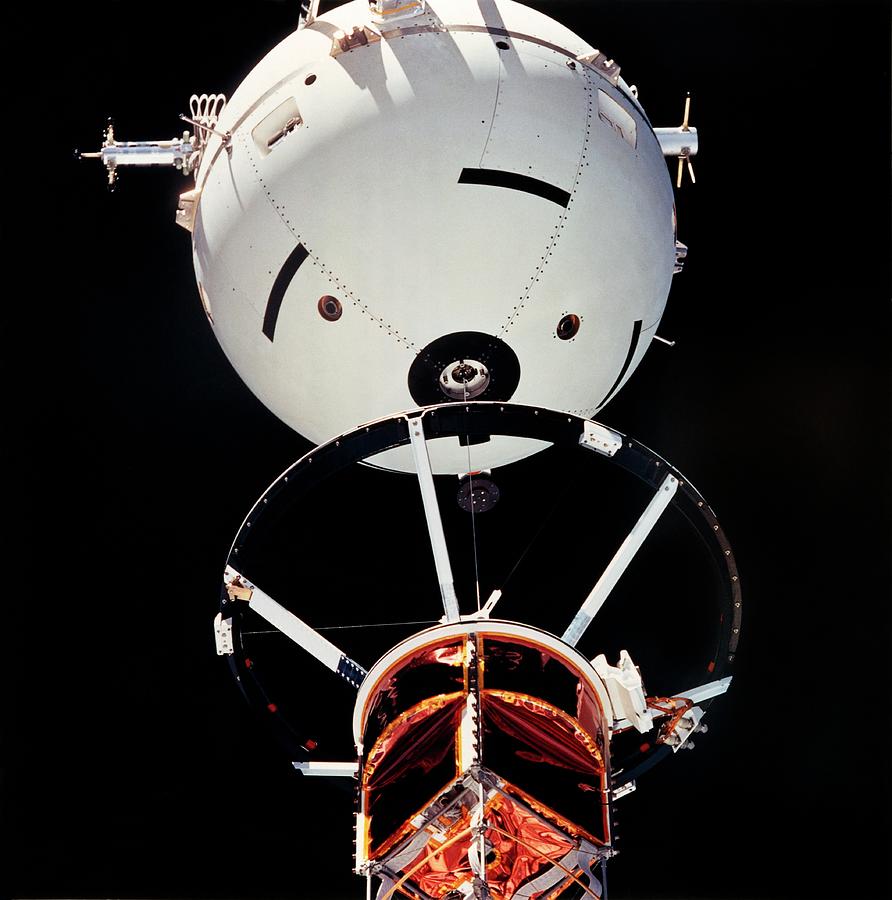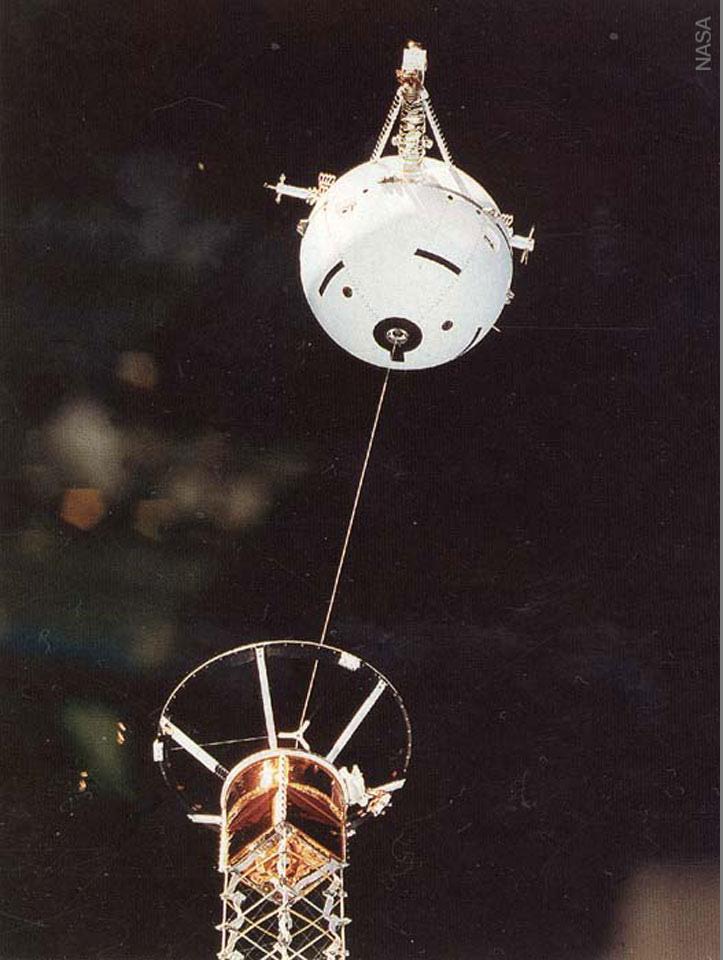Flight Demonstration
The electrodynamic propulsion technology is not new – it has been in development for over 25 years. The first demonstration in orbit took place in 1993 during the Plasma Motor Generator (PMG) experiment by NASA Johnson Space Center. It used insulated copper wire and hollow cathodes on both ends for electron emission and collection. PMG was the second in the series of four successful flights with tethers and deployers designed and built by Tether Applications, Inc. The photos below show the PMG wire winding (left) and its mounting on the side of the Delta-II rocket stage (right).
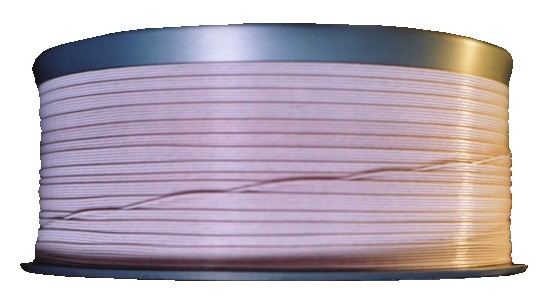
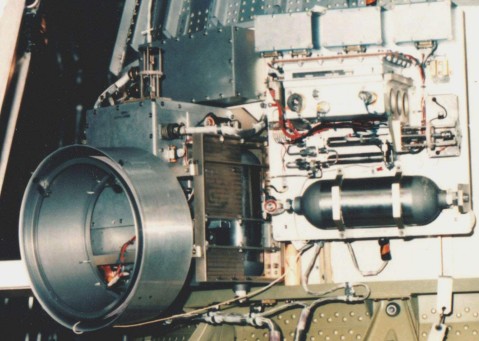
- PMG Winding Mounted on Delta-II (Source: Tether Applications, Inc)
In 1996, TSS-1R demonstrated effective bare surface electron collection, ionospheric circuit closing with emission nearly 20 km away from the collection area, and revealed the arcing problem at high voltages that resulted in a tether burn-through. The initial stages of the tether deployment from the reel and the boom mounted in the Shuttle cargo bay are shown in these photos.
Electron collection with a bare aluminum tape was tested by JAXA in a suborbital flight in August 2010. The tape was 25 mm wide and 0.05 mm thick. It was packed into a foldaway tape deployer using the "Inverse Origami" concept. The Tether Rocket experiment (T-Rex) was launched aboard a S520 sounding rocket and reached a maximum altitude of 309 km. The tape deployed to the length of 133 m, the hollow cathode ignited to provide electron emission, and the circuit closed through the ambient plasma. The current flowing through the system averaged 38 mA.
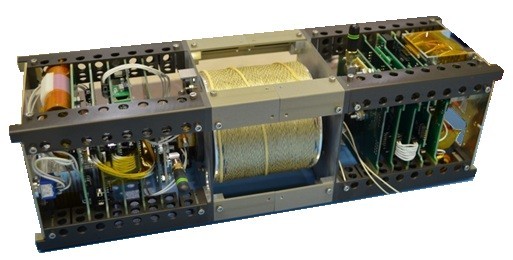
- TEPCE Flight Hardware (Source: NRL)
In recent years, the Naval Research Laboratory took the initiative of advancing the electrodynamic propulsion technology and has built a 3U CubeSat for the Tether Electrodynamics Propulsion CubeSat Experiment (TEPCE). TEPCE was launched on June 25, 2019. On November 16, 2019, the 1.5U end-bodies were energetically separated by a stacer spring, deploying a 1-km conductive tether. The system demonstrated electron emission and collection and the basic principles of electrodynamic operation. TEPCE reentered on February 1, 2020.
- TEPCE Deployment (3D Rendering)
 Electrodynamic Technologies
Electrodynamic Technologies
